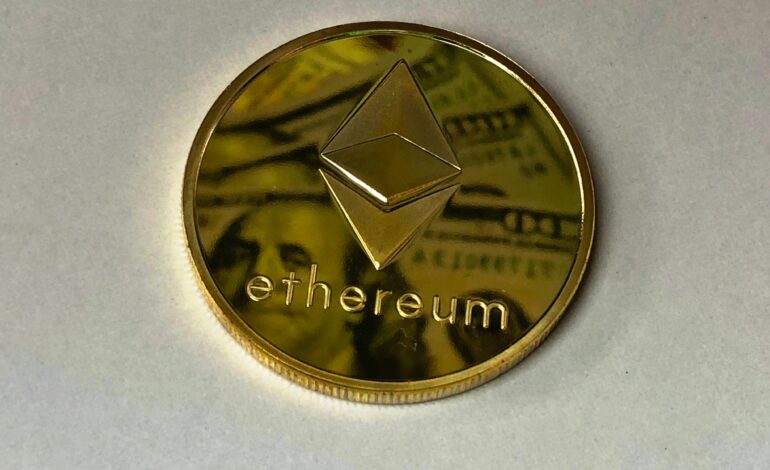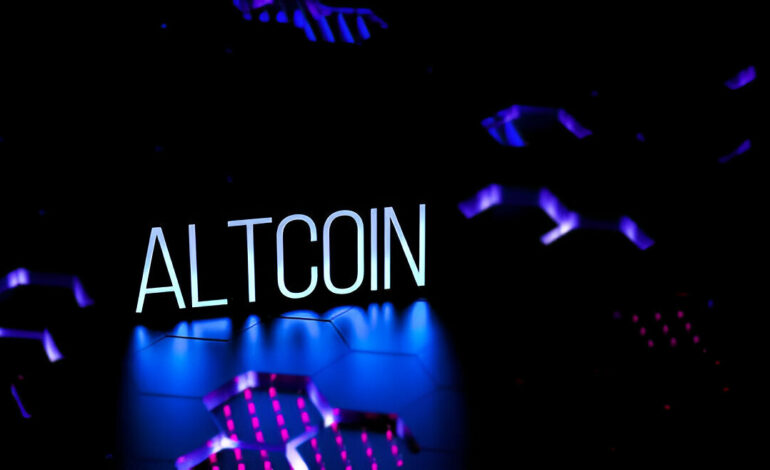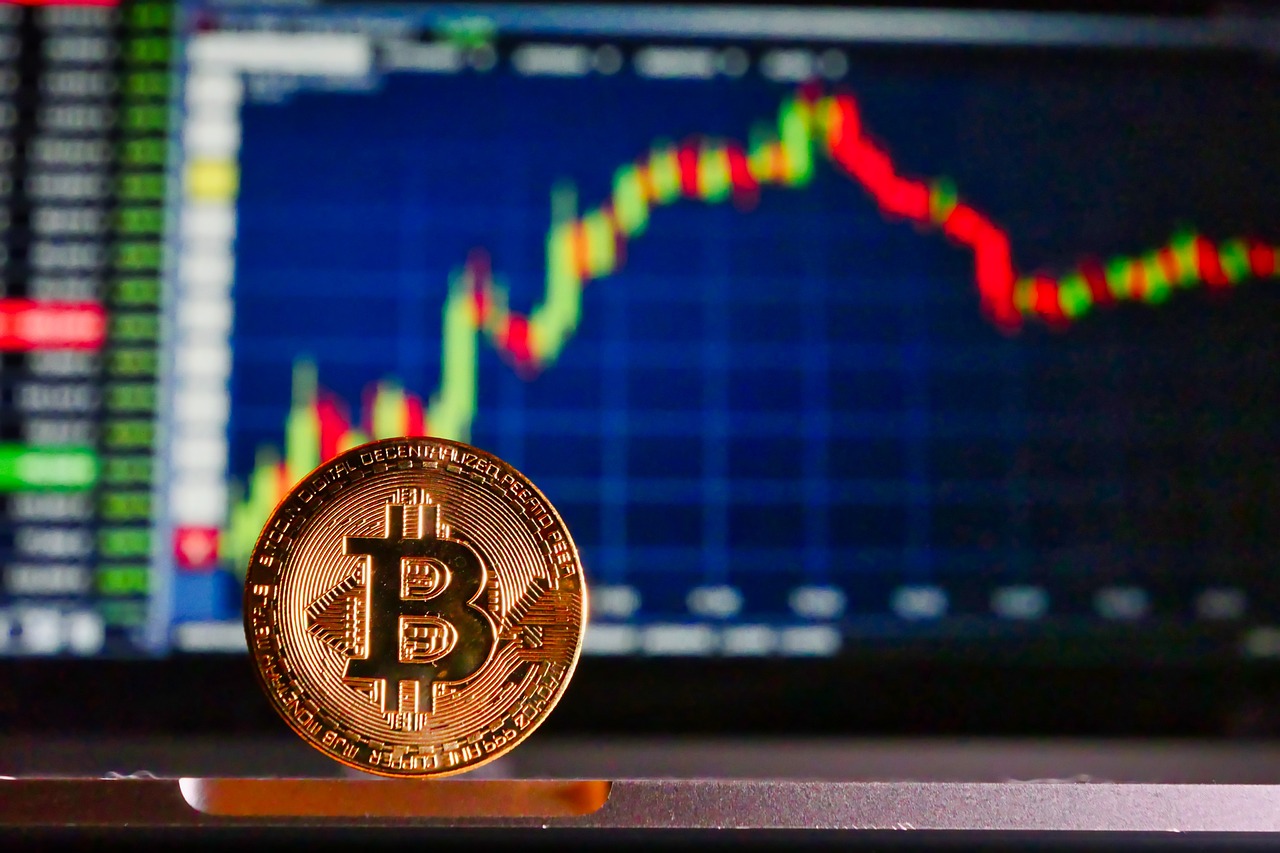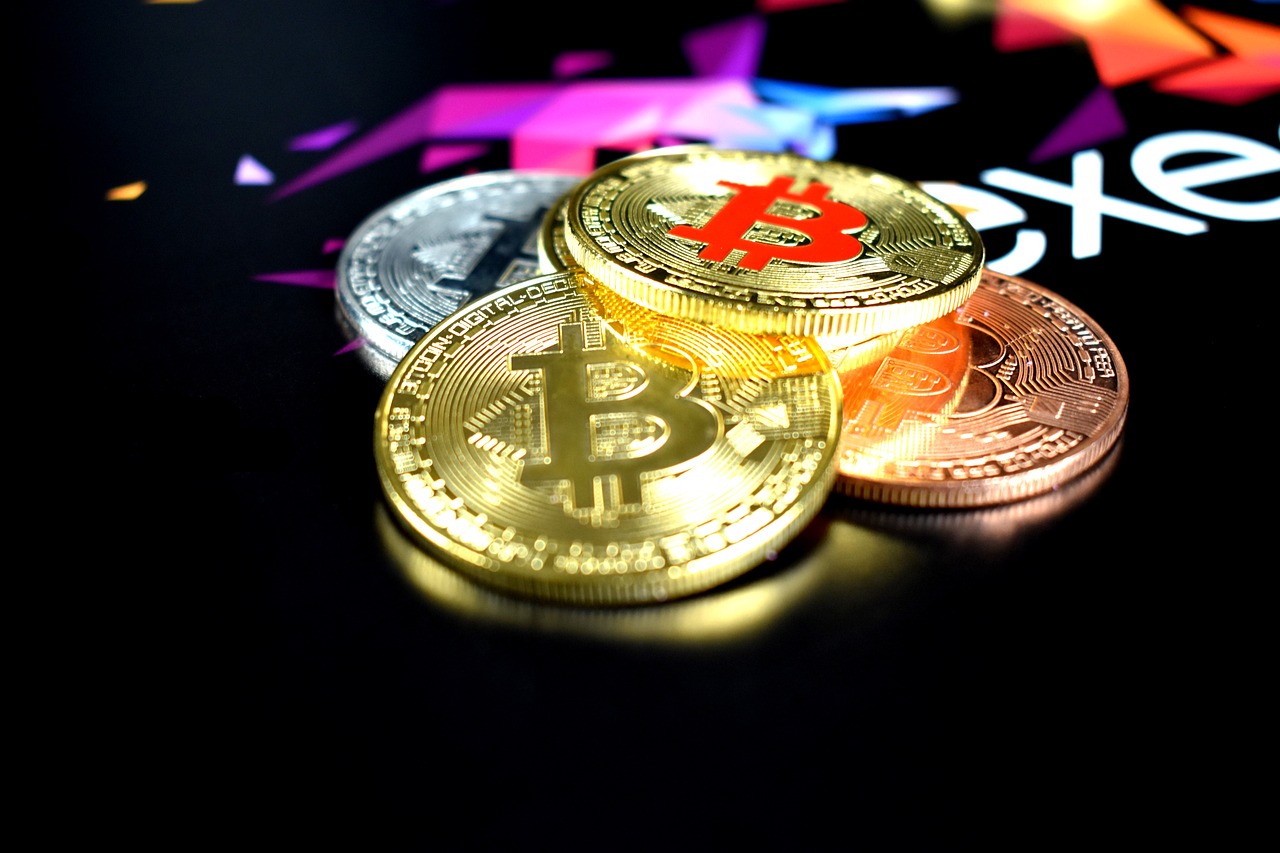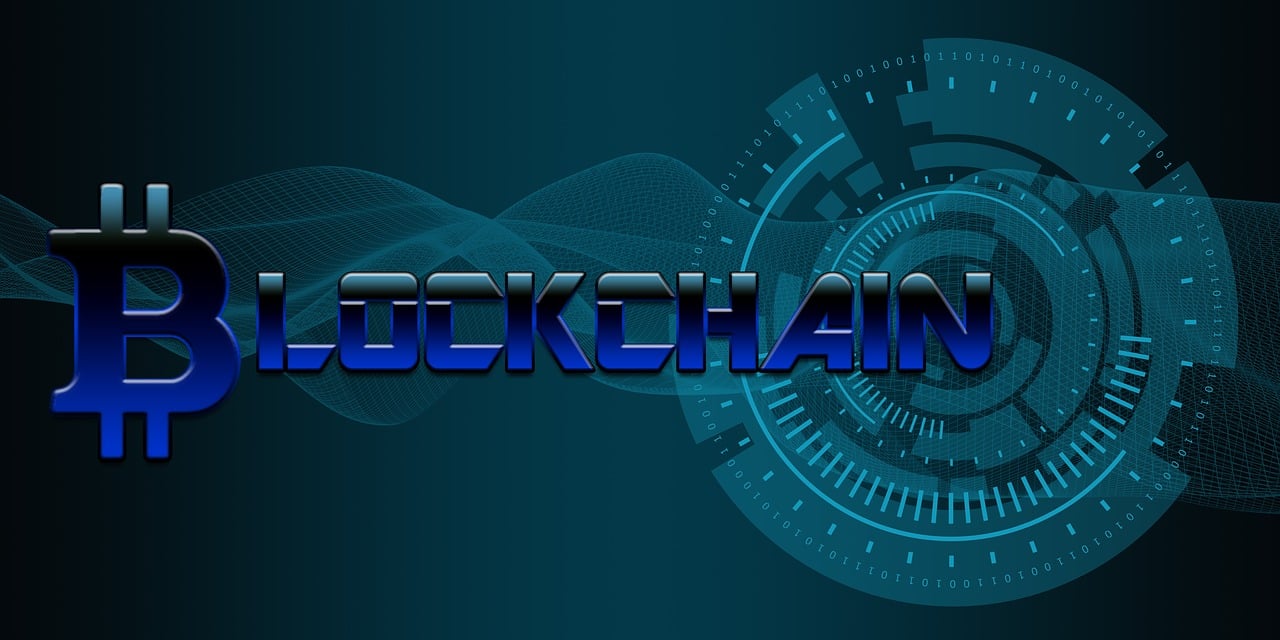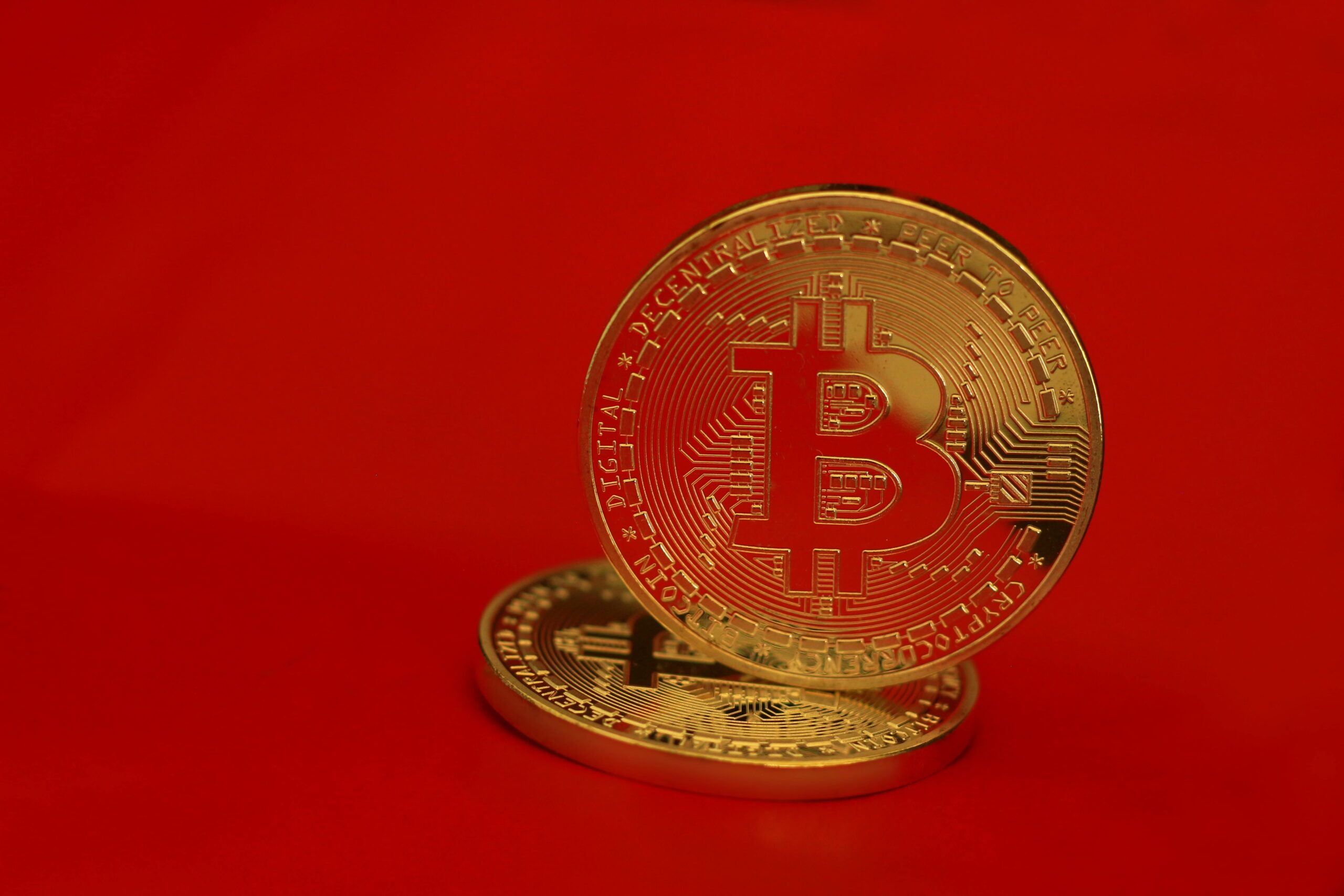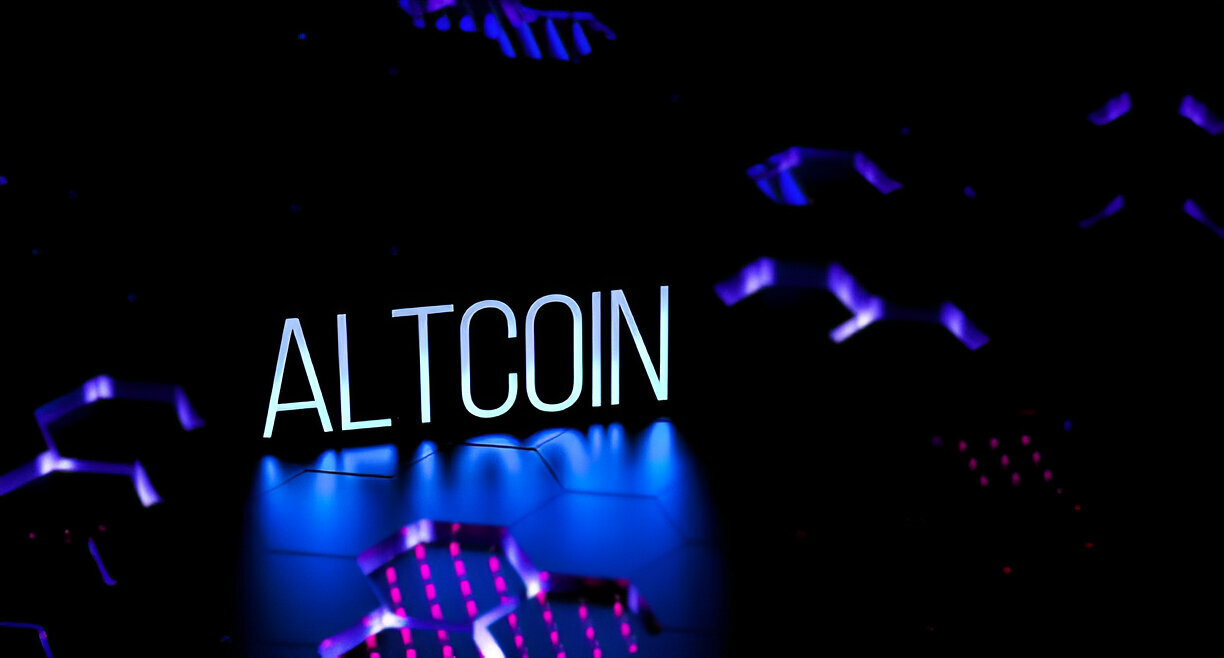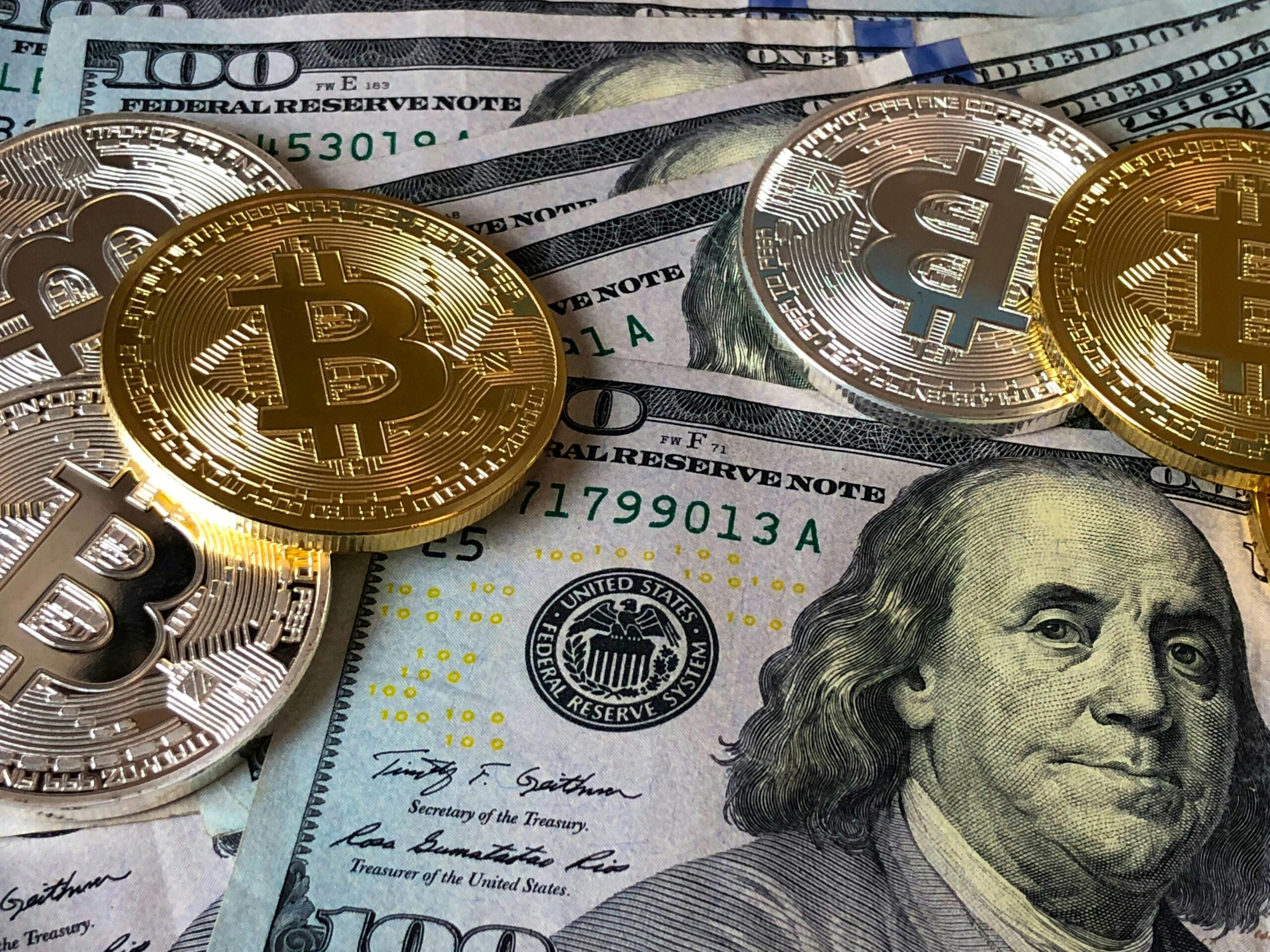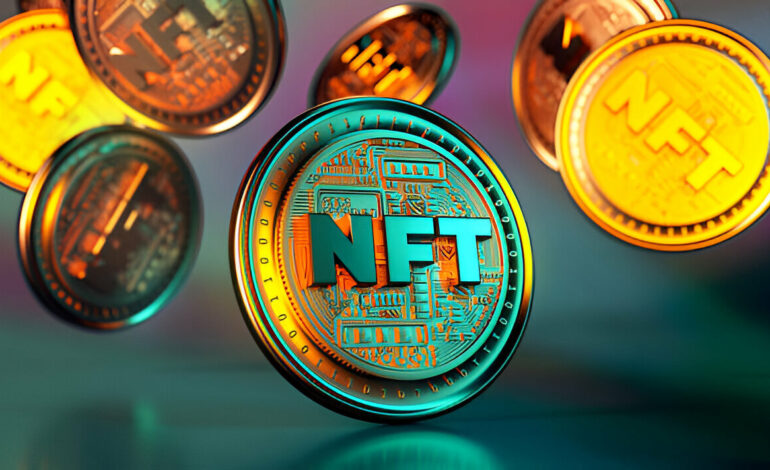
NFTs (Non-Fungible Tokens) have revolutionized the way we think about digital ownership and creativity. From digital art and collectibles to real estate and gaming, NFTs have found applications in various sectors. As we move through 2024, the NFT landscape continues to evolve rapidly. Let’s explore what the future holds for NFTs and the trends shaping this exciting space.
Mainstream Adoption
In 2024, NFTs have firmly entered the mainstream. Major brands and celebrities are launching their own NFT collections, and mainstream platforms are integrating NFT capabilities. Whether it’s owning a piece of digital art, a virtual real estate plot, or exclusive in-game items, NFTs are becoming a regular part of digital life for millions of people.
Enhanced Utility
The utility of NFTs has expanded far beyond digital art and collectibles. NFTs are now used for a variety of purposes, including:
- Music and Entertainment: Musicians and artists release exclusive content and experiences via NFTs, allowing fans to own unique pieces of their favorite works.
- Real Estate: Virtual real estate in the metaverse is booming, with NFTs representing ownership of digital land and properties.
- Gaming: In-game items and characters are increasingly being tokenized as NFTs, allowing players to trade and own unique digital assets.
- Event Tickets: NFTs are being used as tamper-proof tickets for concerts, sports events, and other live events, offering enhanced security and resale capabilities.
Interoperability and Integration
Interoperability between different blockchain networks has improved, allowing NFTs to be easily transferred and utilized across various platforms. This has increased their versatility and value, as users are no longer limited to a single ecosystem. Major tech companies and blockchain projects are collaborating to create a more interconnected and seamless NFT experience.
Environmental Concerns and Solutions
Environmental concerns surrounding the energy consumption of blockchain networks have led to significant advancements in green technology. Many NFT platforms have shifted to more energy-efficient blockchain solutions, such as Ethereum 2.0 and other proof-of-stake networks. These improvements have reduced the carbon footprint of NFTs, addressing one of the major criticisms of the technology.
Regulatory Developments
Clearer regulations have emerged around the world, providing guidelines and protections for NFT creators, buyers, and platforms. This regulatory clarity has fostered a safer and more transparent market, encouraging broader participation and investment in NFTs. As a result, the market has become more stable and mature.
Financial Inclusion and Accessibility
NFTs have become more accessible to a broader audience. User-friendly platforms and wallets have simplified the process of buying, selling, and creating NFTs. This accessibility has democratized digital ownership, allowing more people to participate in the NFT economy regardless of their technical expertise.
Market Dynamics and Value
The NFT market in 2024 remains dynamic, with new projects and innovations constantly emerging. While there are fluctuations in value, the long-term trend shows growth and increasing interest. NFTs have established themselves as a viable investment, with certain collections and assets appreciating significantly over time. However, the market is also becoming more discerning, with quality and utility driving value more than hype.
The Road Ahead
As we look to the future, NFTs continue to hold vast potential. They are transforming industries, creating new opportunities for artists, gamers, and creators, and reshaping how we think about ownership and value in the digital world. Whether you’re a seasoned collector, a curious creator, or an investor, staying informed about the latest developments in the NFT space is essential.
The journey of NFTs is just beginning, and the coming years promise to be filled with innovation and excitement. Stay tuned, stay curious, and be part of the digital revolution that is redefining our world—one NFT at a time.
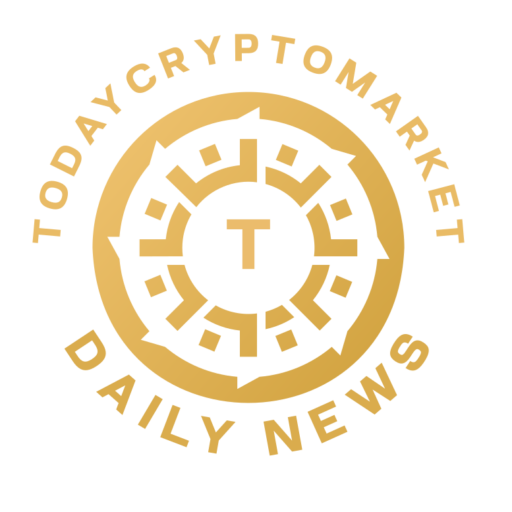
 Bitcoin
Bitcoin  Ethereum
Ethereum  Tether
Tether  XRP
XRP  USDC
USDC  Solana
Solana  TRON
TRON  Lido Staked Ether
Lido Staked Ether  Dogecoin
Dogecoin  Figure Heloc
Figure Heloc  Cardano
Cardano  WhiteBIT Coin
WhiteBIT Coin  Wrapped stETH
Wrapped stETH  Bitcoin Cash
Bitcoin Cash  Wrapped Bitcoin
Wrapped Bitcoin  USDS
USDS  Wrapped eETH
Wrapped eETH  Binance Bridged USDT (BNB Smart Chain)
Binance Bridged USDT (BNB Smart Chain)  Chainlink
Chainlink  Monero
Monero  WETH
WETH  LEO Token
LEO Token  Zcash
Zcash  Stellar
Stellar  Hyperliquid
Hyperliquid  Coinbase Wrapped BTC
Coinbase Wrapped BTC  Ethena USDe
Ethena USDe  Litecoin
Litecoin  Sui
Sui  Avalanche
Avalanche  Hedera
Hedera  sUSDS
sUSDS  USDT0
USDT0  Shiba Inu
Shiba Inu  Dai
Dai  Uniswap
Uniswap  PayPal USD
PayPal USD  Mantle
Mantle  Cronos
Cronos  World Liberty Financial
World Liberty Financial  Toncoin
Toncoin  Ethena Staked USDe
Ethena Staked USDe  Canton
Canton  Polkadot
Polkadot  USD1
USD1  Rain
Rain  Aave
Aave  Bitget Token
Bitget Token  MemeCore
MemeCore  Tether Gold
Tether Gold  OKB
OKB  Falcon USD
Falcon USD  Bittensor
Bittensor  NEAR Protocol
NEAR Protocol  Ethereum Classic
Ethereum Classic  Binance-Peg WETH
Binance-Peg WETH  Jito Staked SOL
Jito Staked SOL  Midnight
Midnight  BlackRock USD Institutional Digital Liquidity Fund
BlackRock USD Institutional Digital Liquidity Fund  Pi Network
Pi Network  Aster
Aster  Pepe
Pepe  Internet Computer
Internet Computer  syrupUSDC
syrupUSDC  Ethena
Ethena  PAX Gold
PAX Gold  HTX DAO
HTX DAO  Jupiter Perpetuals Liquidity Provider Token
Jupiter Perpetuals Liquidity Provider Token  Sky
Sky  Global Dollar
Global Dollar  Circle USYC
Circle USYC  KuCoin
KuCoin  Ripple USD
Ripple USD  BFUSD
BFUSD  Binance Bridged USDC (BNB Smart Chain)
Binance Bridged USDC (BNB Smart Chain)  Worldcoin
Worldcoin  Rocket Pool ETH
Rocket Pool ETH  syrupUSDT
syrupUSDT  Ondo
Ondo  Aptos
Aptos  Gate
Gate  Binance Staked SOL
Binance Staked SOL  Wrapped BNB
Wrapped BNB  Pump.fun
Pump.fun  POL (ex-MATIC)
POL (ex-MATIC)  Arbitrum
Arbitrum  Janus Henderson Anemoy AAA CLO Fund
Janus Henderson Anemoy AAA CLO Fund  Official Trump
Official Trump  Function FBTC
Function FBTC  Lombard Staked BTC
Lombard Staked BTC  Algorand
Algorand  Solv Protocol BTC
Solv Protocol BTC  Filecoin
Filecoin  Cosmos Hub
Cosmos Hub  NEXO
NEXO  VeChain
VeChain  Liquid Staked ETH
Liquid Staked ETH  USDtb
USDtb  OUSG
OUSG  USDD
USDD  Superstate Short Duration U.S. Government Securities Fund (USTB)
Superstate Short Duration U.S. Government Securities Fund (USTB)  WrappedM by M^0
WrappedM by M^0  Sei
Sei  Beldex
Beldex  Arbitrum Bridged WBTC (Arbitrum One)
Arbitrum Bridged WBTC (Arbitrum One)  Polygon Bridged USDC (Polygon PoS)
Polygon Bridged USDC (Polygon PoS)  Mantle Staked Ether
Mantle Staked Ether  clBTC
clBTC  Ondo US Dollar Yield
Ondo US Dollar Yield  Bonk
Bonk  PancakeSwap
PancakeSwap  Render
Render  Audiera
Audiera  Renzo Restaked ETH
Renzo Restaked ETH  USDai
USDai  Wrapped Flare
Wrapped Flare  Kinetiq Staked HYPE
Kinetiq Staked HYPE  Polygon PoS Bridged DAI (Polygon POS)
Polygon PoS Bridged DAI (Polygon POS)  MYX Finance
MYX Finance  Jupiter
Jupiter  L2 Standard Bridged WETH (Base)
L2 Standard Bridged WETH (Base)  StakeWise Staked ETH
StakeWise Staked ETH  Jupiter Staked SOL
Jupiter Staked SOL  Pudgy Penguins
Pudgy Penguins  c8ntinuum
c8ntinuum  Usual USD
Usual USD  tBTC
tBTC  Optimism
Optimism  Story
Story  Arbitrum Bridged WETH (Arbitrum One)
Arbitrum Bridged WETH (Arbitrum One)  Curve DAO
Curve DAO  Spiko EU T-Bills Money Market Fund
Spiko EU T-Bills Money Market Fund  GHO
GHO  Lido DAO
Lido DAO  TrueUSD
TrueUSD  GTETH
GTETH  Dash
Dash  Artificial Superintelligence Alliance
Artificial Superintelligence Alliance  Tezos
Tezos  Virtuals Protocol
Virtuals Protocol  Ether.fi
Ether.fi  Injective
Injective  Aerodrome Finance
Aerodrome Finance  AB
AB  Stacks
Stacks  SPX6900
SPX6900  Merlin Chain
Merlin Chain  Stader ETHx
Stader ETHx  Ether.Fi Liquid ETH
Ether.Fi Liquid ETH  Marinade Staked SOL
Marinade Staked SOL  sBTC
sBTC  Wrapped ApeCoin
Wrapped ApeCoin  Celestia
Celestia  Swell Ethereum
Swell Ethereum  JUST
JUST  Starknet
Starknet  The Graph
The Graph  FLOKI
FLOKI  Sun Token
Sun Token  Maple Finance
Maple Finance  Lorenzo Wrapped Bitcoin
Lorenzo Wrapped Bitcoin  BitTorrent
BitTorrent  Coinbase Wrapped Staked ETH
Coinbase Wrapped Staked ETH  Steakhouse USDC Morpho Vault
Steakhouse USDC Morpho Vault  DoubleZero
DoubleZero  Conflux
Conflux  Bitcoin SV
Bitcoin SV  IOTA
IOTA  Ethereum Name Service
Ethereum Name Service  Chiliz
Chiliz  Olympus
Olympus  Telcoin
Telcoin  pippin
pippin  Avalanche Bridged BTC (Avalanche)
Avalanche Bridged BTC (Avalanche)  Kaia
Kaia  AINFT
AINFT  Trust Wallet
Trust Wallet  EURC
EURC  Pyth Network
Pyth Network  dogwifhat
dogwifhat  Binance-Peg Dogecoin
Binance-Peg Dogecoin  Cap USD
Cap USD  Kinesis Gold
Kinesis Gold  crvUSD
crvUSD  Resolv USR
Resolv USR  Gnosis
Gnosis  Resolv wstUSR
Resolv wstUSR  ether.fi Staked ETH
ether.fi Staked ETH  Arbitrum Bridged Wrapped eETH (Arbitrum)
Arbitrum Bridged Wrapped eETH (Arbitrum)  Basic Attention
Basic Attention  Binance-Peg BUSD
Binance-Peg BUSD  Pendle
Pendle  The Sandbox
The Sandbox  BENQI Liquid Staked AVAX
BENQI Liquid Staked AVAX  JasmyCoin
JasmyCoin  Helium
Helium  Fartcoin
Fartcoin  GALA
GALA  Vision
Vision  Unit Bitcoin
Unit Bitcoin  Sonic
Sonic  Mantle Restaked ETH
Mantle Restaked ETH  Theta Network
Theta Network  Flow
Flow  Polygon PoS Bridged WETH (Polygon POS)
Polygon PoS Bridged WETH (Polygon POS)  Legacy Frax Dollar
Legacy Frax Dollar  Aster Staked BNB
Aster Staked BNB  Zebec Network
Zebec Network  Decred
Decred  LayerZero
LayerZero  Gate Wrapped BTC
Gate Wrapped BTC  Humanity
Humanity  SwissBorg
SwissBorg  Plasma
Plasma  Fidelity Digital Interest Token
Fidelity Digital Interest Token  Janus Henderson Anemoy Treasury Fund
Janus Henderson Anemoy Treasury Fund  MimbleWimbleCoin
MimbleWimbleCoin  Binance Wrapped BTC
Binance Wrapped BTC  Kinesis Silver
Kinesis Silver  Mantle Bridged WETH (Mantle)
Mantle Bridged WETH (Mantle)  Wrapped STX (Velar)
Wrapped STX (Velar)  NEO
NEO  Raydium
Raydium  Ape and Pepe
Ape and Pepe  Arbitrum Bridged wstETH (Arbitrum)
Arbitrum Bridged wstETH (Arbitrum)  Wrapped HYPE
Wrapped HYPE  Decentraland
Decentraland  ZKsync
ZKsync  Staked USDai
Staked USDai  Compound
Compound  RealLink
RealLink  Noble USDC
Noble USDC  Wrapped Aave Ethereum USDC
Wrapped Aave Ethereum USDC  Arweave
Arweave  Falcon Finance
Falcon Finance  Terra Luna Classic
Terra Luna Classic  Bybit Staked SOL
Bybit Staked SOL  Drift Staked SOL
Drift Staked SOL  USDa
USDa  YLDS
YLDS  Monad
Monad  BTSE Token
BTSE Token  Savings Dai
Savings Dai  1INCH
1INCH  AUSD
AUSD  Polygon Bridged WBTC (Polygon POS)
Polygon Bridged WBTC (Polygon POS)  Ultima
Ultima  BUILDon
BUILDon  Loaded Lions
Loaded Lions  Blockchain Capital
Blockchain Capital  Wrapped AVAX
Wrapped AVAX  Golem
Golem  eCash
eCash  THORChain
THORChain  WeFi
WeFi  Fluid
Fluid  Stable
Stable  EigenCloud (prev. EigenLayer)
EigenCloud (prev. EigenLayer)  Cheems Token
Cheems Token  Treehouse ETH
Treehouse ETH  Walrus
Walrus  Staked Cap USD
Staked Cap USD  Zora
Zora  Ethena Staked ENA
Ethena Staked ENA  Legacy Token
Legacy Token  Immutable
Immutable  Tradable NA Rent Financing Platform SSTN
Tradable NA Rent Financing Platform SSTN  Lombard
Lombard  MultiversX
MultiversX  Kamino
Kamino  MX
MX  ApeCoin
ApeCoin  Wormhole
Wormhole  Cronos Bridged USDC (Cronos)
Cronos Bridged USDC (Cronos)  OriginTrail
OriginTrail  0G
0G  Solv Protocol Staked BTC
Solv Protocol Staked BTC  InfiniFi USD
InfiniFi USD  WEMIX
WEMIX  Wrapped Aave Ethereum USDT
Wrapped Aave Ethereum USDT  UCHAIN
UCHAIN  Onyxcoin
Onyxcoin  Ribbita by Virtuals
Ribbita by Virtuals  Theo Short Duration US Treasury Fund
Theo Short Duration US Treasury Fund  Aster USDF
Aster USDF  Kraken Wrapped BTC
Kraken Wrapped BTC  Satoshi Stablecoin
Satoshi Stablecoin  KOGE
KOGE  Quantum Resistant Ledger
Quantum Resistant Ledger  Reserve Rights
Reserve Rights  StandX DUSD
StandX DUSD  Convex Finance
Convex Finance  Flare Bridged XRP (Flare)
Flare Bridged XRP (Flare)  Spiko US T-Bills Money Market Fund
Spiko US T-Bills Money Market Fund  SoSoValue
SoSoValue  Alchemist AI
Alchemist AI  Amp
Amp  SafePal
SafePal  SOON
SOON  Jito
Jito  Aethir
Aethir  GUSD
GUSD  Livepeer
Livepeer  SuperVerse
SuperVerse  Bedrock BTC
Bedrock BTC  Wrapped Pulse
Wrapped Pulse  Origin Ether
Origin Ether  Midas mF-ONE
Midas mF-ONE  Tokenize Xchange
Tokenize Xchange  Axie Infinity
Axie Infinity  Synthetix
Synthetix  STASIS EURO
STASIS EURO  MetaDAO
MetaDAO  Nexus Mutual
Nexus Mutual  Brett
Brett  DeXe
DeXe  Wrapped Ethereum (Sollet)
Wrapped Ethereum (Sollet)  Binance-Peg SOL
Binance-Peg SOL  BitMart
BitMart  Toshi
Toshi  Phantom Staked SOL
Phantom Staked SOL  Prom
Prom  Concordium
Concordium  dYdX
dYdX  Qtum
Qtum  StarkGate Bridged USDC (Starknet)
StarkGate Bridged USDC (Starknet)  币安人生 (BinanceLife)
币安人生 (BinanceLife)  Grass
Grass  Apollo Diversified Credit Securitize Fund
Apollo Diversified Credit Securitize Fund  GoMining Token
GoMining Token  Core
Core  Creditcoin
Creditcoin  Bridged Wrapped Ether (Linea)
Bridged Wrapped Ether (Linea)  Universal BTC
Universal BTC  Theta Fuel
Theta Fuel  Conscious Token
Conscious Token  Rekt
Rekt  ADI
ADI  The American Dream
The American Dream  ether.fi weETHs
ether.fi weETHs  Kusama
Kusama  Four
Four  Meteora
Meteora  DOLA
DOLA  Resolv Liquidity Provider Token
Resolv Liquidity Provider Token  KAITO
KAITO  Ozone Chain
Ozone Chain  yearn.finance
yearn.finance  Rollbit Coin
Rollbit Coin  Polygon Bridged weETH (Katana)
Polygon Bridged weETH (Katana)  Super OETH
Super OETH  AIOZ Network
AIOZ Network  Pleasing USD
Pleasing USD  RaveDAO
RaveDAO  Velo
Velo  Gas
Gas  Turbo
Turbo  Crypto.com Staked ETH
Crypto.com Staked ETH  Shuffle
Shuffle  Railgun
Railgun  MAG7.ssi
MAG7.ssi  Nervos Network
Nervos Network  Gaib AI Dollar Alpha USDC
Gaib AI Dollar Alpha USDC  Staked TRX
Staked TRX  Linea
Linea  PayFi Strategy Token USDC
PayFi Strategy Token USDC  Niza Global
Niza Global  Ravencoin
Ravencoin  CoW Protocol
CoW Protocol  ETHPlus
ETHPlus  Keeta
Keeta  KUB Coin
KUB Coin  Frax USD
Frax USD  AWE Network
AWE Network  Anzen USDz
Anzen USDz  cWBTC
cWBTC  River
River  Arkham
Arkham  Akash Network
Akash Network  Wrapped Aave Ethereum WETH
Wrapped Aave Ethereum WETH  CoinEx
CoinEx  Ronin
Ronin  USDA
USDA  Baby Doge Coin
Baby Doge Coin  Unibase
Unibase  DigiByte
DigiByte  Ether.fi Staked BTC
Ether.fi Staked BTC  0x Protocol
0x Protocol  Tradable Singapore Fintech SSL
Tradable Singapore Fintech SSL  Threshold Network
Threshold Network  Ring USD
Ring USD  QOM One Bridged USDT (QL1)
QOM One Bridged USDT (QL1)  MNEE USD Stablecoin
MNEE USD Stablecoin  Melania Meme
Melania Meme  Savings xDAI
Savings xDAI  Mina Protocol
Mina Protocol  Impossible Cloud Network Token
Impossible Cloud Network Token  Dog (Bitcoin)
Dog (Bitcoin)  AgentFun.AI
AgentFun.AI  Open Campus
Open Campus  cETH
cETH  CASH
CASH  Wrapped Savings rUSD
Wrapped Savings rUSD  TDCCP
TDCCP  AI Companions
AI Companions  BurnedFi
BurnedFi  Nano
Nano  Avant USD
Avant USD  Movement
Movement  Novem Pro
Novem Pro  Renzo Restaked LST
Renzo Restaked LST  TempleDAO
TempleDAO  Safe
Safe  Staked HYPE
Staked HYPE  Axelar
Axelar  Wrapped Glue
Wrapped Glue  Zilliqa
Zilliqa  ZIGChain
ZIGChain  Babypie Wrapped BTC
Babypie Wrapped BTC  COCA
COCA  Cronos Bridged USDT (Cronos)
Cronos Bridged USDT (Cronos)  VeThor
VeThor  Nexpace
Nexpace  Comedian
Comedian  Qubic
Qubic  ChainOpera AI
ChainOpera AI  DeepBook
DeepBook  OpenEden OpenDollar
OpenEden OpenDollar  Pleasing Gold
Pleasing Gold  GMX
GMX  Metal Blockchain
Metal Blockchain  Mog Coin
Mog Coin  VanEck Treasury Fund
VanEck Treasury Fund  Kava
Kava  ViciCoin
ViciCoin  Astar
Astar  Vana
Vana  Magic Eden
Magic Eden  staked USD1+
staked USD1+  SentismAI
SentismAI  Avant Staked USD
Avant Staked USD  VVS Finance
VVS Finance  HashKey Platform Token
HashKey Platform Token  Sad Coin
Sad Coin  ORDI
ORDI  Sushi
Sushi  Moonwell Flagship ETH (Morpho Vault)
Moonwell Flagship ETH (Morpho Vault)  Berachain
Berachain  coco
coco  Moca Network
Moca Network  Non-Playable Coin
Non-Playable Coin  Popcat
Popcat  MANTRA
MANTRA  Midas mHYPER
Midas mHYPER  Siacoin
Siacoin  VaultBridge Bridged WBTC (Katana)
VaultBridge Bridged WBTC (Katana)  INI
INI  XPR Network
XPR Network  Terra
Terra  Oasis
Oasis  Pieverse
Pieverse  sUSDa
sUSDa  EUR CoinVertible
EUR CoinVertible  BCGame Coin
BCGame Coin  Drift Protocol
Drift Protocol  cat in a dogs world
cat in a dogs world  OKX Wrapped BTC
OKX Wrapped BTC  Swop
Swop  Gama Token
Gama Token  Hastra Wrapped YLDS
Hastra Wrapped YLDS  Luxxcoin
Luxxcoin  Felix feUSD
Felix feUSD  Bio Protocol
Bio Protocol  XYO Network
XYO Network  Blur
Blur  Numeraire
Numeraire  PRIME
PRIME  Verus
Verus  Chutes
Chutes  Centrifuge
Centrifuge  Bridged Ether (StarkGate)
Bridged Ether (StarkGate)  Succinct
Succinct  Moo Deng
Moo Deng  Puff The Dragon
Puff The Dragon  Chia
Chia  Celo
Celo  Peanut the Squirrel
Peanut the Squirrel  ONFA
ONFA  Slash Vision Labs
Slash Vision Labs  L2 Standard Bridged WETH (Optimism)
L2 Standard Bridged WETH (Optimism)  Avantis
Avantis  Loopring
Loopring  aelf
aelf  Re Protocol reUSD
Re Protocol reUSD  Venus
Venus  Wrapped Centrifuge
Wrapped Centrifuge  MindWaveDAO
MindWaveDAO  Power Protocol
Power Protocol  Paycoin
Paycoin  Irys
Irys  Bridged Wrapped stETH (Gnosis)
Bridged Wrapped stETH (Gnosis)  pumpBTC
pumpBTC  Matrixdock Gold
Matrixdock Gold  Jelly-My-Jelly
Jelly-My-Jelly  Waves
Waves  Orca
Orca  Giggle Fund
Giggle Fund  IoTeX
IoTeX  QuantixAI
QuantixAI  Optio
Optio  Binance-Peg SHIB
Binance-Peg SHIB  Stargate Bridged USDC
Stargate Bridged USDC  Yooldo Games
Yooldo Games  AtomOne
AtomOne  Sahara AI
Sahara AI  Omni Network [Old]
Omni Network [Old]  Polymesh
Polymesh  Compounding OpenDollar
Compounding OpenDollar  Ankr Network
Ankr Network  Useless Coin
Useless Coin  Cysic
Cysic  Stargate Bridged WETH
Stargate Bridged WETH  RedStone
RedStone  Recall
Recall  Unit Pump
Unit Pump  DFDV Staked SOL
DFDV Staked SOL  UMA
UMA  FOLKS
FOLKS  Space and Time
Space and Time  earnAUSD
earnAUSD  Arbitrum Bridged USDC (Arbitrum)
Arbitrum Bridged USDC (Arbitrum)  SKALE
SKALE  Lagrange
Lagrange  BitDCA
BitDCA  GOHOME
GOHOME  Sologenic
Sologenic  Onchain Yield Coin
Onchain Yield Coin  Fluid Wrapped Staked ETH
Fluid Wrapped Staked ETH  Minidoge
Minidoge  APEX
APEX  USDX
USDX  Geodnet
Geodnet  Pirate Chain
Pirate Chain  HOME
HOME  Api3
Api3  Sign
Sign  Pundi X
Pundi X  Mask Network
Mask Network  OVERTAKE
OVERTAKE  Memecoin
Memecoin  AltLayer
AltLayer  Frax (prev. FXS)
Frax (prev. FXS)  Ardor
Ardor  EthereumPoW
EthereumPoW  Venice Token
Venice Token  BIM
BIM  SSV Network
SSV Network  f(x) USD Saving
f(x) USD Saving  Avalanche Bridged WETH (Avalanche)
Avalanche Bridged WETH (Avalanche)  Euler
Euler  Magic Internet Money (Ethereum)
Magic Internet Money (Ethereum)  opBNB Bridged USDT (opBNB)
opBNB Bridged USDT (opBNB)  Apertum
Apertum  OG Fan Token
OG Fan Token  Gold Park
Gold Park  Status
Status  BUSD
BUSD  Huma Finance
Huma Finance  APEX
APEX  Wrapped CRO
Wrapped CRO  Harmony
Harmony  Band
Band  Illuvium
Illuvium  Plume
Plume  LCX
LCX  Kinetiq Earn Vault
Kinetiq Earn Vault  Decentralized Social
Decentralized Social  Law Blocks
Law Blocks  Steakhouse ETH Morpho Vault
Steakhouse ETH Morpho Vault  Escoin
Escoin  Doodles
Doodles  COTI
COTI  Binance-Peg ZEC
Binance-Peg ZEC  HumidiFi
HumidiFi  Tokenlon
Tokenlon  Tellor Tributes
Tellor Tributes  TAGGER
TAGGER  ChangeNOW
ChangeNOW  WorldAssets
WorldAssets  Notcoin
Notcoin  VaultBridge Bridged USDC (Katana)
VaultBridge Bridged USDC (Katana)  Sui Bridged WBTC (Sui)
Sui Bridged WBTC (Sui)  Enjin Coin
Enjin Coin  Zedxion
Zedxion  Siren
Siren  Pax Dollar
Pax Dollar  WOO
WOO  Babylon
Babylon  Dialectic USD Vault
Dialectic USD Vault  SAFEbit
SAFEbit  Tesla xStock
Tesla xStock  VaultBridge Bridged ETH (Katana)
VaultBridge Bridged ETH (Katana)  Ontology
Ontology  Helder
Helder  Ronin Bridged WETH (Ronin)
Ronin Bridged WETH (Ronin)  USDKG
USDKG  ARK
ARK  CARV
CARV  Hex Trust USD
Hex Trust USD  ECOMI
ECOMI  StraitsX XUSD
StraitsX XUSD  Constellation
Constellation  PYTHIA
PYTHIA  IOST
IOST  GAL (migrated to Gravity - G)
GAL (migrated to Gravity - G)  Animecoin
Animecoin  Infrared Bera
Infrared Bera  MarsMi
MarsMi  Swarm Network
Swarm Network  Mountain Protocol USD
Mountain Protocol USD  VeraOne
VeraOne  Overnight.fi USD+
Overnight.fi USD+  Unit Plasma
Unit Plasma  YZY
YZY  ConstitutionDAO
ConstitutionDAO  Hive
Hive  Firelight Staked XRP
Firelight Staked XRP  rsERG
rsERG  Fulcrom
Fulcrom  Yield Guild Games
Yield Guild Games  Orbs
Orbs  BORA
BORA  NKYC Token
NKYC Token  Sygnum FIUSD Liquidity Fund
Sygnum FIUSD Liquidity Fund  SMARDEX
SMARDEX  MVL
MVL  Degen
Degen  iExec RLC
iExec RLC  Mezo Wrapped BTC
Mezo Wrapped BTC  KGeN
KGeN  Midas mTBILL
Midas mTBILL  Gems VIP
Gems VIP  Bancor Network
Bancor Network  Gemini Dollar
Gemini Dollar  Stargate Finance
Stargate Finance  GMT
GMT  XPIN Network
XPIN Network  Neiro
Neiro  Derive
Derive  Whiteheart
Whiteheart  Cronos Bridged WBTC (Cronos)
Cronos Bridged WBTC (Cronos)  Bridged Wrapped Bitcoin (StarkGate)
Bridged Wrapped Bitcoin (StarkGate)  Sui Bridged Ether (Sui)
Sui Bridged Ether (Sui)  Spark
Spark  Aegis YUSD
Aegis YUSD  Lisk
Lisk  Tornado Cash
Tornado Cash  Energy Web
Energy Web  StorX
StorX  SWFTCOIN
SWFTCOIN  Solv Protocol SolvBTC Jupiter
Solv Protocol SolvBTC Jupiter  UnifAI Network
UnifAI Network  Stronghold
Stronghold  Solar
Solar  Sai
Sai  Powerledger
Powerledger  AgentLISA
AgentLISA  Linea Bridged USDT (Linea)
Linea Bridged USDT (Linea)  CJournal
CJournal  Bridged NXPC
Bridged NXPC  Spell
Spell  Celium
Celium  Rocket Pool
Rocket Pool  bitcastle Token
bitcastle Token  Hivemapper
Hivemapper  AI Rig Complex
AI Rig Complex  Flux
Flux  Moonwell Flagship USDC (Morpho Vault)
Moonwell Flagship USDC (Morpho Vault)  Austin Capitals
Austin Capitals  BOLD
BOLD  Sui Bridged USDT (Sui)
Sui Bridged USDT (Sui)  Glidr
Glidr  Cloud
Cloud  Binance-Peg DAI
Binance-Peg DAI  Atoshi
Atoshi  Amnis Aptos
Amnis Aptos  BOOK OF MEME
BOOK OF MEME  Balancer
Balancer  Shentu
Shentu  Wrapped Bitcoin (PulseChain)
Wrapped Bitcoin (PulseChain)  Audius
Audius  Cross
Cross  Bitlight
Bitlight  Lava Network
Lava Network  Somnia
Somnia  Xertra
Xertra  Bonfida
Bonfida  TerraClassicUSD
TerraClassicUSD  Anoma
Anoma  Coinbase Wrapped XRP
Coinbase Wrapped XRP  Infrared Finance
Infrared Finance  Synthetix sUSD
Synthetix sUSD  io.net
io.net  Noble Dollar (USDN)
Noble Dollar (USDN)  Avalanche Bridged USDC (Avalanche)
Avalanche Bridged USDC (Avalanche)  Usual
Usual  Echelon Prime
Echelon Prime  Osmosis
Osmosis  Ergo
Ergo  Hermez Network
Hermez Network  Alchemy Pay
Alchemy Pay  Ridges AI
Ridges AI  CYBER
CYBER  Big Time
Big Time  Sanctum Infinity
Sanctum Infinity  OpenLedger
OpenLedger  Osaka Protocol
Osaka Protocol  Kyber Network Crystal
Kyber Network Crystal  Blast
Blast  Anvil
Anvil  BSquared Network
BSquared Network  Avici
Avici  Tokamak Network
Tokamak Network  IQ
IQ  Ondo U.S. Dollar Token
Ondo U.S. Dollar Token  Lista USD
Lista USD  Fractal Bitcoin
Fractal Bitcoin  Liquity
Liquity  Metis
Metis  Corn
Corn  HarryPotterObamaSonic10Inu (ETH)
HarryPotterObamaSonic10Inu (ETH)  BOTXCOIN
BOTXCOIN  BTU Protocol
BTU Protocol  Gigachad
Gigachad  Nirvana ANA
Nirvana ANA  Proprietary Trading Network
Proprietary Trading Network  Lista DAO
Lista DAO  Unipoly
Unipoly  Liquity USD
Liquity USD  MiL.k
MiL.k  PumpMeme
PumpMeme  BLOCKv
BLOCKv  Chromia
Chromia  Nym
Nym  Hypha Staked AVAX
Hypha Staked AVAX  TokenPocket Token
TokenPocket Token  Wrapped NXM
Wrapped NXM  Moonwell
Moonwell  Banana For Scale
Banana For Scale  Ontology Gas
Ontology Gas  Targon
Targon  Snowbank
Snowbank  Solayer
Solayer  Bounce
Bounce  Gains Network
Gains Network  Songbird
Songbird  哈基米 (Hajimi)
哈基米 (Hajimi)  Hyperbeat USDT
Hyperbeat USDT  Ocean Protocol
Ocean Protocol  Hylo USD
Hylo USD  Wrapped XRP
Wrapped XRP  WAX
WAX  Caldera
Caldera  Bit2Me
Bit2Me  Yield Basis
Yield Basis  Chain-key Bitcoin
Chain-key Bitcoin  Manta Network
Manta Network  Steem
Steem  Victoria VR
Victoria VR  Secret
Secret  Orderly
Orderly  Universal ETH
Universal ETH  Black Phoenix
Black Phoenix  AIntivirus
AIntivirus  Aevo
Aevo  Wrapped BCH
Wrapped BCH  TROLL
TROLL  Marlin
Marlin  The Grays Currency
The Grays Currency  The Official 67 Coin
The Official 67 Coin  Across Protocol
Across Protocol  XT Stablecoin XTUSD
XT Stablecoin XTUSD  Global Commercial Business
Global Commercial Business  Honey
Honey  Goatseus Maximus
Goatseus Maximus  Purr
Purr  Wrapped SEI
Wrapped SEI  Ventuals vHYPE
Ventuals vHYPE  Avalanche Bridged WBTC (Avalanche)
Avalanche Bridged WBTC (Avalanche)  Cobak
Cobak  Hive Dollar
Hive Dollar  f(x) Protocol fxUSD
f(x) Protocol fxUSD  Palladium Network
Palladium Network  PinkSale
PinkSale  Zentry
Zentry  CargoX
CargoX  Gravity (by Galxe)
Gravity (by Galxe)  Aurora
Aurora  SATS (Ordinals)
SATS (Ordinals)  Yield Optimizer ETH
Yield Optimizer ETH  SkyAI
SkyAI  Rootstock Infrastructure Framework
Rootstock Infrastructure Framework  zkPass
zkPass  Mango Network
Mango Network  DIA
DIA  USTBL
USTBL  ORE
ORE  Metaplex
Metaplex  Dacxi
Dacxi  DEAPCOIN
DEAPCOIN  Aergo
Aergo  Act I The AI Prophecy
Act I The AI Prophecy  Sapien
Sapien  Tree
Tree  Restaking Vault ETH
Restaking Vault ETH  sETH
sETH  Metal DAO
Metal DAO  XT.com
XT.com  Kujira
Kujira  dKargo
dKargo  tokenbot
tokenbot  Wrapped BTT (Tron)
Wrapped BTT (Tron)  Amiko
Amiko  Daku V2
Daku V2  Diverge Loop
Diverge Loop  Auki
Auki  Delysium
Delysium  Rainbow Bridged USDT (Near)
Rainbow Bridged USDT (Near)  Velvet
Velvet  Advertise Coin
Advertise Coin  Dialectic ETH Vault
Dialectic ETH Vault  WINkLink
WINkLink  Treasure
Treasure  Wiki Cat
Wiki Cat  Lucidum
Lucidum  BabyBoomToken
BabyBoomToken  Dymension
Dymension  Sophon
Sophon  Iagon
Iagon  Wojak
Wojak  ao Computer
ao Computer  Stables Labs USDX
Stables Labs USDX  Bifrost
Bifrost  aixbt
aixbt  Tensor
Tensor  Syndicate
Syndicate  Carrot
Carrot  Yield Optimizer USD
Yield Optimizer USD  B3 (Base)
B3 (Base)  PHALA
PHALA  Cartesi
Cartesi  Dogelon Mars
Dogelon Mars  A Hunters Dream
A Hunters Dream  Lorenzo stBTC
Lorenzo stBTC  Yuzu USD
Yuzu USD  Chainflip
Chainflip  sDOLA
sDOLA  Zerebro
Zerebro  Adshares
Adshares  QANplatform
QANplatform  Smooth Love Potion
Smooth Love Potion  Vine
Vine  QuarkChain
QuarkChain  BOB (Build on Bitcoin)
BOB (Build on Bitcoin)  infiniFi Locked iUSD (1week)
infiniFi Locked iUSD (1week)  Achain
Achain  MetaArena
MetaArena  DORA
DORA  Monerium EUR emoney
Monerium EUR emoney  GRX Chain
GRX Chain  Chintai
Chintai  aura
aura  MAI
MAI  Ankr Staked ETH
Ankr Staked ETH  cBAT
cBAT  Hyperlane
Hyperlane  Predictions
Predictions  Wrapped CORE
Wrapped CORE  NUMINE Token
NUMINE Token  Resolv
Resolv  affine
affine  Wrapped POL
Wrapped POL  Uquid Coin
Uquid Coin  Medibloc
Medibloc  Pre-SP
Pre-SP  SPACE ID
SPACE ID  ElizaOS
ElizaOS  Savings crvUSD
Savings crvUSD  Magma Finance
Magma Finance  SPDR S&P 500 ETF (Ondo Tokenized ETF)
SPDR S&P 500 ETF (Ondo Tokenized ETF)  PunkStrategy
PunkStrategy  Yei Finance
Yei Finance  Wilder World
Wilder World  Mango
Mango  Mira
Mira  Wrapped Zedxion
Wrapped Zedxion  Arcblock
Arcblock  Wrapped TAO
Wrapped TAO  Electronic USD
Electronic USD  Metronome Synth USD
Metronome Synth USD  OlaXBT
OlaXBT  GXChain
GXChain  Compound USDC
Compound USDC  USDu
USDu  Acet
Acet  WazirX
WazirX  Definitive
Definitive  Clearpool
Clearpool  Midas mMEV
Midas mMEV  Metronome Synth ETH
Metronome Synth ETH  StakeStone
StakeStone  TCY
TCY  Elephant Money
Elephant Money  Banana Gun
Banana Gun  Pocket Network
Pocket Network  IXS
IXS  Hippo Protocol
Hippo Protocol  ChainGPT
ChainGPT  SKOR AI
SKOR AI  Rayls
Rayls  Cookie DAO
Cookie DAO  MAP Protocol
MAP Protocol  Ozapay
Ozapay  Aster Staked USDF
Aster Staked USDF  EURA
EURA  Keep Network
Keep Network  BounceBit
BounceBit  Particle Network
Particle Network  Ika
Ika  0xy
0xy  saffron.finance
saffron.finance  Ekubo Protocol
Ekubo Protocol  Sonic SVM
Sonic SVM  Injective Bridged USDT (Injective)
Injective Bridged USDT (Injective)  Binance-Peg Avalanche
Binance-Peg Avalanche  Bonk Staked SOL
Bonk Staked SOL  Hylo Staked SOL
Hylo Staked SOL  Vault Bridge Bridged USDT (Katana)
Vault Bridge Bridged USDT (Katana)  Avail
Avail  Baby Shark Universe
Baby Shark Universe 